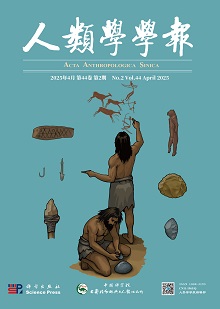The Upper Paleolithic period in North China began around 40,000 years ago, demonstrating increased cultural variability. While many sites primarily employed simple core and flake technology, new technologies emerged in several locations. Innovations in ochre processing, bone tools and ornaments, long-distance obsidian transportation, and intra-site spatial organization further illustrate the complex nature of human evolution and interaction between different cultural groups. However, it is argued that contextual factors such as environmental conditions and preservation variations may have influenced the cultural variability found in the archaeological record. Due to the poor preservation of organic materials in Paleolithic contexts, it is essential to reconstruct human activities through use-wear analysis of well-preserved lithic artifacts.
The Xiachuan site, with its well-preserved archaeological layers dating back approximately 44~30 kaBP (calibrated), holds great significance in the ongoing discussion about behavioral variability in North China. Among these, the Fuyihegeliang Locality (35°26′22″N, 112°0′43″E), which was re-excavated in 2014, uncovered abundant archaeological remains in the Early Upper Paleolithic layers (40~30 kaBP, calibrated). These include a large number of lithic artifacts, grindstones, ochre, and several hearths. The lithic assemblage is dominated by a simple core and flake technology, with small lithic artifacts mainly made from black chert and heavy-duty implements mainly made from quartz sandstone.
While previous studies on lithic artifacts focused on typological and technological analyses, limited knowledge exists regarding tool functions and their correlation with human activities. This study fills this gap by presenting the results of a meticulous use-wear analysis of 53 chert artifacts sampled from the Early Upper Paleolithic layer at the Fuyihegeliang Locality recovered in 2014. The sample includes various tool types such as scrapers, points, denticulates, spur-like tools, notches, retouched flakes, retouched chunks, and flakes. Through the evaluation of preservation state, multiple-scale analysis, and experimentation, this study reveals a variety of human activities at the site. A total of 26 specimens were observed to have use-wear; they were used for processing wood, bone, and flesh in various working motions. The use of the artifacts demonstrated versatility and flexibility, with a distinct preference for utilizing the unretouched sharp lateral edges of the tools. Additionally, this analysis demonstrates the invaluable role of use-wear analysis in tracing a wide range of practices that often leave minimal traces in the archaeological record.
The frequent use of chert artifacts in wood-working, which has been rarely reported from other Paleolithic sites in China, reflects the exploitation of plant materials at the Xiachuan site. This also provides new insights into the behavioral variability of ancient humans in North China around 40,000 years ago.









